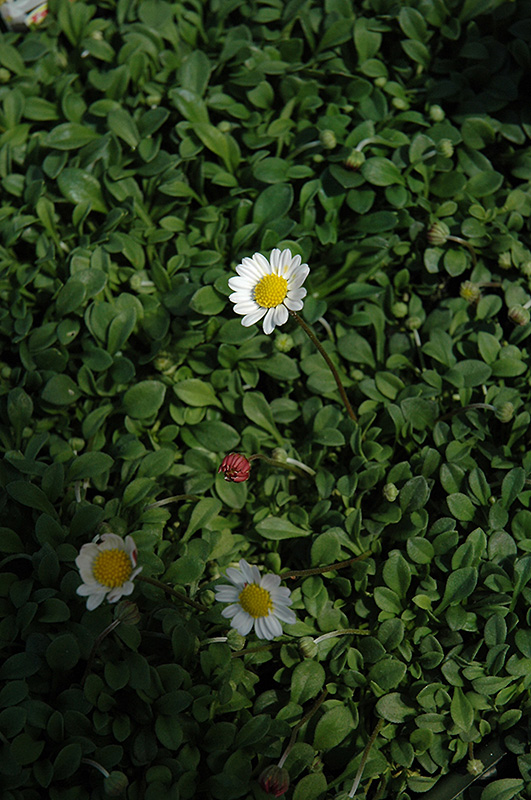Miniature Mat Daisy
Description
This lovely ground hugging variety produces a long blooming display of tiny white flowers above fine, glossy green foliage in late spring; great for edging or a small area groundcover; will tolerate moderate foot traffic once established
Landscape Attributes
Miniature Mat Daisy is a dense herbaceous annual with a ground-hugging habit of growth. It brings an extremely fine and delicate texture to the garden composition and should be used to full effect.
Miniature Mat Daisy is recommended for the following landscape applications;
Planting & Growing
Miniature Mat Daisy will grow to be only 2 inches tall at maturity extending to 4 inches tall with the flowers, with a spread of 15 inches. When grown in masses or used as a bedding plant, individual plants should be spaced approximately 12 inches apart. Its foliage tends to remain low and dense right to the ground. Although it's not a true annual, this fast-growing plant can be expected to behave as an annual in our climate if left outdoors over the winter, usually needing replacement the following year. As such, gardeners should take into consideration that it will perform differently than it would in its native habitat.
This plant does best in full sun to partial shade. It does best in average to evenly moist conditions, but will not tolerate standing water. It is particular about its soil conditions, with a strong preference for rich, acidic soils. It is highly tolerant of urban pollution and will even thrive in inner city environments. This species is not originally from North America.
Miniature Mat Daisy is a fine choice for the garden, but it is also a good selection for planting in outdoor pots and containers. Because of its spreading habit of growth, it is ideally suited for use as a 'spiller' in the 'spiller-thriller-filler' container combination; plant it near the edges where it can spill gracefully over the pot. Note that when growing plants in outdoor containers and baskets, they may require more frequent waterings than they would in the yard or garden.

